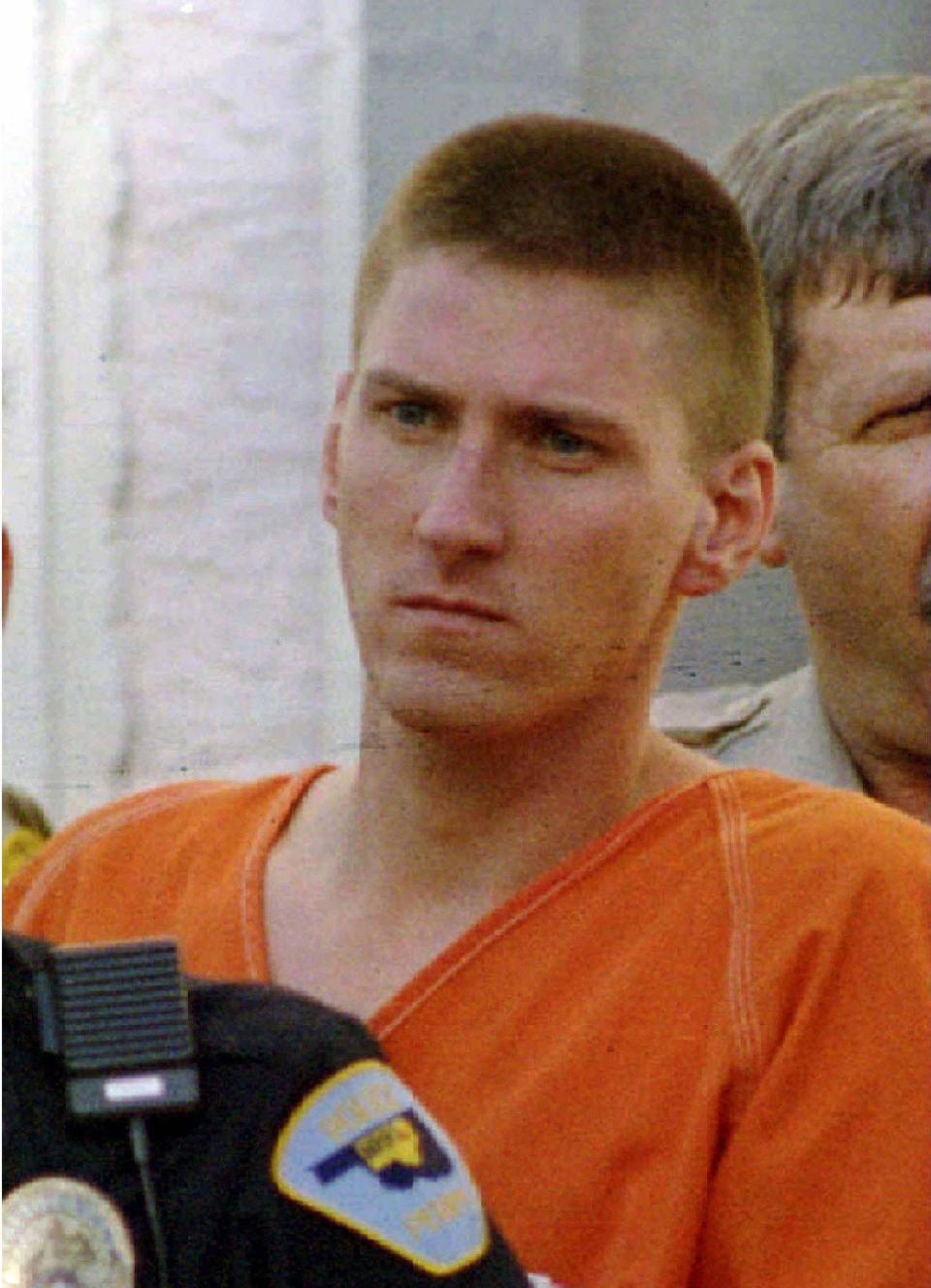It's been nearly 30 years since the Oklahoma City bombing. What to know
- Oops!Something went wrong.Please try again later.
Nearly 30 years ago, the world was shaken when a bomb killed over 150 people in downtown Oklahoma City on a Wednesday morning.
With the anniversary of the Oklahoma City bombing coming up, here's what you need to know about the bombing, the perpetrators and what fueled their anti-government views.
When was the Oklahoma City bombing?
On the morning of April 19, 1995, at 9:02 a.m., a truck bomb was detonated outside the Alfred P. Murrah Federal Building. The bombing left 168 people dead, including 19 children.
At the time, it was the largest example of terrorism in the United States before the Sept. 11, 2001 attacks. It remains the largest act of domestic terrorism in the United States.
Who was the Oklahoma City bomber?
Timothy McVeigh, a veteran of the Gulf War and a sympathizer with the U.S. militia movement, detonated the Ryder rental truck full of explosives that he parked in front of the building.
Terry Nichols, a fellow veteran who met McVeigh during their time in the U.S. Army, assisted in the planning and preparation of the bombing.

In a federal case, McVeigh received the death sentence for his role in the bombing and the deaths of eight federal agents. He was executed by lethal injection in 2001. Nichols was sentenced in the federal case to life in prison without the possibility of release.
Nichols was also tried by the State of Oklahoma for the loss of the others − 60 men, women and children, and one unborn baby. Nichols was sentenced in 2004 to 161 life sentences without the possibility of parole.
Connection between Ruby Ridge, Waco and Oklahoma City bombing
While McVeigh began developing his anti-government stance beforehand, the Ruby Ridge standoff of 1992 and the 1993 Waco siege solidified his view that the U.S. government wanted to disarm the public and take away people's Second Amendment rights, according to History.com.
In August of 1992, U.S. marshals attempted to apprehend Randy Weaver, who hadn't shown up for his trial on weapons charges. The standoff and 11-day siege left Weaver's 14-year-old son, a U.S. Marshal and Weaver's wife, Vicki, dead.
Then in 1993, when the 51-day Waco siege ended with a fire that left 75 members of the Branch Davidian religious sect dead, including 25 children, McVeigh reacted even more strongly. And he wasn't the only one — these two events fueled anger within the American militia movement and other far-right groups.
McVeigh chose to bomb the Murrah Building on the two-year anniversary of the fire at Waco, and before his execution in 2001 he said he intended the bombing as retribution for the deaths at Ruby Ridge and Waco, according to History.com.
How to watch Katie Couric Oklahoma City bombing documentary
American journalist Katie Couric recently announced the release of the HBO documentary "An American Bombing: The Road to April 19th," which she co-produced, and said "explores the surge in anti-government ideals and political violence in the 1980s, leading to the Oklahoma City bombing and continuing today."
The documentary will be available to stream on HBO Max on April 16.
This article originally appeared on Oklahoman: When was the Oklahoma City bombing? What to know about the event, aftermath

